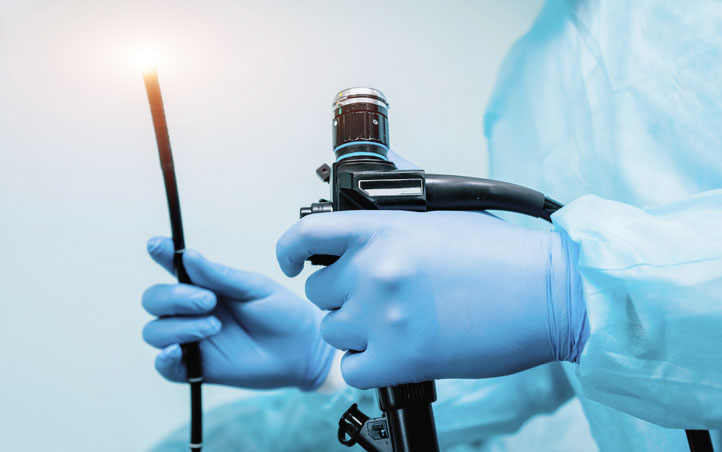
What Is a Gastroscopy?
A gastroscopy is a procedure to examine the upper digestive tract, which includes the oesophagus, stomach, and the first part of the small intestine (duodenum). It is performed to investigate digestive issues such as bloating, abdominal pain, acid reflux, and weight loss.
How Does a Gastroscopy Work?
The gastroscopy procedure involves using a thin, flexible tube called a gastroscope. This tube is gently inserted through your mouth and manoeuvred down your oesophagus into your stomach and the first part of your small intestine (duodenum).
Once in place, the camera on the gastroscope transmits live images of the lining of your upper digestive tract onto a screen. This allows the doctor to visually examine the tissues for any abnormalities like ulcers, inflammation, or bleeding.
If necessary, the doctor can pass tiny instruments through the gastroscope to collect tissue samples (biopsies) for further analysis in a lab.
Gastroscopy is a quick and easy way to see what is going on inside your stomach and get relief. Consult with a doctor if a gastroscopy is suitable for you.
How To Prepare for a Gastroscopy
You will need to fast for approximately 6 hours before the procedure and you may take sips of water up to 2 hours before the procedure. Extended fasting or a repeat of the test might be necessary if your stomach is not completely empty of food and fluid, which prevents your doctor from seeing all parts of the stomach clearly.
Typically, you can continue most medications before the procedure, except for diabetic medications and blood thinners. Check with your doctor for specific instructions.
How Is a Gastroscopy Performed?
A nurse will conduct final checks and accompany you to the procedure room, where they will insert an intravenous line. They will administer a throat spray and/or a light sedation to reduce discomfort during the procedure. A plastic mouthpiece will then be placed between your teeth for dental protection.
You will be positioned to lie on your left side and sedation will then be administered. The procedure will start once you are unconscious, and you will likely not remember any parts of it. As you continue to breathe on your own, you will be monitored throughout the procedure to ensure your safety.
After the procedure is finished, you will slowly regain consciousness. The entire procedure usually lasts around 10-15 minutes.
What Happens After a Gastroscopy?
You will receive care in a recovery room and be monitored until you regain consciousness from the anaesthesia. The nurses will provide you with food and drink following post-procedure assessments. It is advisable to arrange for a family member to receive discharge instructions and bring you home.
You should refrain from returning to work or driving until the following day. It is typical to experience mild sore throat, abdominal discomfort, or bloating after a gastroscopy. These symptoms typically resolve within 24 hours.
Your doctor will schedule an appointment to explain the gastroscopy procedure and its findings, including the results of any biopsies taken. They will then discuss the appropriate management plan with you.
Is Gastroscopy a Safe Procedure?
Gastroscopy is a safe procedure, but there are rare and small risks of complications that can occur. These include:
- Reaction to the sedation
- Burning sensation at the site of injection
- Breathing difficulties
- Irregular heartbeat
- Aspiration of stomach contents
- Bleeding due to accidental damage to a blood vessel
Your safety and well-being are our top priorities, and we strive to make your experience as worry-free as possible. If you have any concerns or questions about the procedure or its potential risks, please do not hesitate to discuss them with your doctor. We are here to support you every step of the way.
